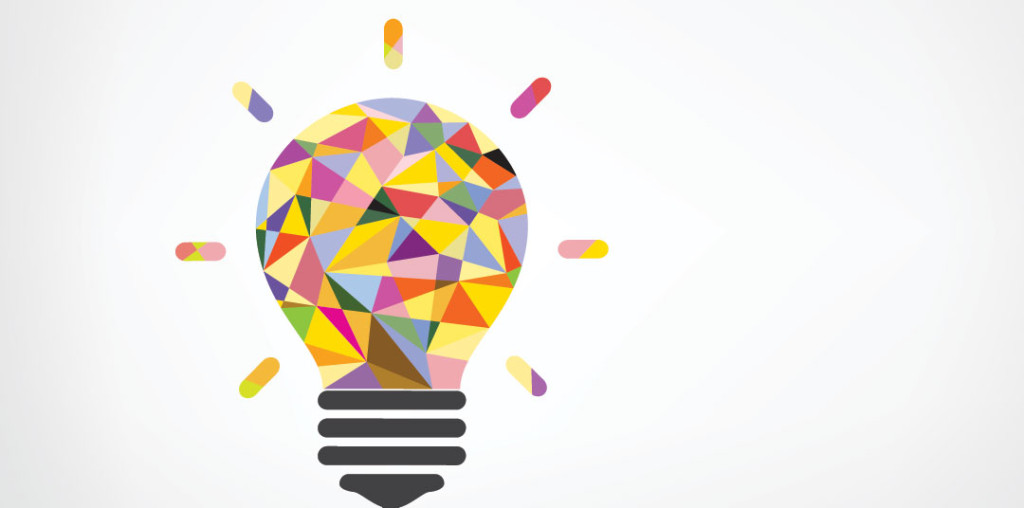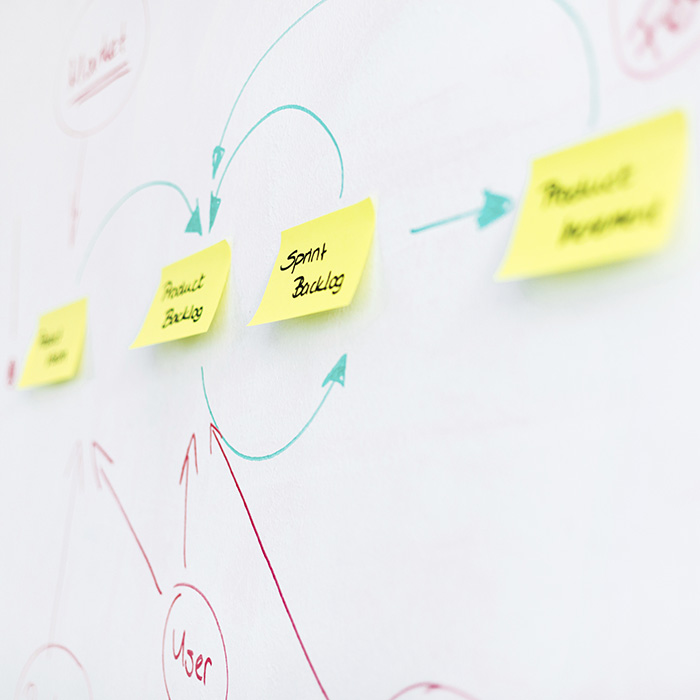The Ideation Process - Big Idea to Custom Software Design
Preface: When it comes to invention (creating something for the first time, or innovating on an old idea), there is an inextricable relationship between art and science. There is a universal need to have a free flow of creative thinking without restriction, yet we are constrained by known limitations such as time, risk tolerance, and budget. So invention demands that we think creatively (unreasonably even) within confines of our tool box, and somehow bend these resources to create an innovative solution.

What is the purpose of ideation?
"The value of an idea lies in the using of it." - Thomas Edison
An idea on its own is worth nothing. The process of coming up with an idea that can be turned into something valuable is called ideation. In our world, the ideation process is used to provide clarity around the development of product software or a SaaS solution, and the prioritization of various steps during the development process. It’s a collaborative process with the client that requires us to create a relationship between the following:
- Idea Generation (human intuition and creativity),
- Technology (technology selection and implementation),
- Market Potential (research and analytics).
With a level of consistency, the perspective and insights about the idea vary depending on who we are speaking with: CEO, CTO, or Entrepreneur. The CEO tends to have an acute understanding of Market Potential, how the idea is intuitively valuable, but naturally has less bandwidth to get deeply acquainted with requirements at an implementation level. The CTO usually comes armed with a well-rounded sense for the market potential and creative side of things, but is required to be more focused on the solution and implementation; i.e. what patterns are being used to manage big data, a large volume of transactions, business continuity, security, disaster recovery, cloud, etc. The entrepreneur often comes with the innovative idea and passion for what the product will be and what solution it will deliver (today and tomorrow), but is looking for greater clarity on Market Potential and Tech Implementation.

What’s true about each persona is that they are all great leaders, very tenacious, and open to value-driven thinking. In light of this, we thought we would share a few assumptions we have about ideation process, and ultimately, how these assumptions orientate us towards successful results. Secondly, we wanted to share how we order the ideation process and what we anticipate the outcomes to be. First off are the Assumptions…
Assumption #1: With the ideation process, people in the room are just as important as the ideas in the room.
"Innovation has nothing to do with how many R & D dollars you have, ... It's about the people you have, how you're led, and how much you get it." - Steve Jobs
In our early meetings with a client we put equal importance on developing relationship and as we do on evaluating the big idea and the data. We are searching for a good personality fit through conversation to establish a comfort level in the room so ideas can flow freely without reservation or fear of sounding absurd.
Assumption #2: Preconceived step-by-step processes work great as a guidelines, but need to be calibrated to who is in the room.
We don’t force a multi-step ideation process on our clients because everyone comes to the table with a different background, worldview and value system. For instance, the ideation process with a CEO of a startup versus a CTO of a large organization may require alternative approaches just based on experience level, or whether they have a initial product created. One may require an in-depth discovery session to flesh out the entire scope of the project, where the other already understands the scope, but really needs the ideation session to jump ahead to topics like software integration, development methodology or longer-term solutioning.
Assumption #3: The ideation process is less about what the end product will look like, and more about who it’s for, how it works and why.
Simply put, products serve humanity. Once designed and released, they evolve and adapt to changing values and needs. Within the ideation process we are first looking to connect the dots on the core fundamentals about the product:
- What is it that we are creating?
- What informed observations, business intelligence and/or customer knowledge serve as motivation to development?
- What are the primary set of tasks being performed? 4. What set of problems are being solved? 5. How are people intended to interact with the solution?
- What new behaviours are created after the product is launched?
Once we understand how the product works, we can then start imagining how it will look and feel, and how people will relate with it now and in the future.
With the assumptions out of the way, we wanted to provide some Q&A around requirements, context how we structure the process and what we anticipate the outcomes to be.
When should you start the ideation process and who needs to be involved?
The ideation process begins after you have already validated your theories through testing and market research. You are committed to building a product and you have a catalogue of ideas about what it could be. We select a development team that we think is best suited for the task prior to our first ideation session with a client. When it comes to client participation, it is vital that the product owners and key stakeholders are involved at this time. And depending on project requirements, the average ideation process can take 2 - 3 days to complete.
What’s on the agenda?
"The best ideas start as conversations." - Jony Ive
Our role is to be the facilitators without an agenda and to create an environment where ideas are generated. As a standard, we begin interacting as a group in a very open and collaborative manner in an effort to define the project in simple terms. Amongst many things we are looking to establish 3 areas:
- An Idea Repository: We are looking to form a number of ideas about what the product could be based on our client’s informed observations, business intelligence and customer knowledge.
- A High Level Feature List: A list of business centric features that includes technology and infrastructure needs and long term development goals. 3. Development Methodology: Clarifying how high value business goals are met early and how change is continually supported. See Agile Manifesto and the Manifesto for Software Craftsmanship.
What are the outcomes?
"The secret of getting ahead is getting started. The secret of getting started is breaking your complex overwhelming tasks into small manageable tasks, and then start on the first one." - Anonymous

At the end of the ideation process we will jointly have a comprehensive view of the entire project. We understand your business, you understand the development methodology (agile/scrum), and together we are prepared for an important next step of technology selection. We take the best ideas and turn them into units of work. A tangible plan will emerge with clear tasks ranked by business value.
The plan is never fully complete (nor do we want it to be), because discoveries happen organically within the process of development and we will need to adapt. But by the end of ideation we’ll have a place from which to begin, a roadmap for us to build something of real value, together.
Epilogue
In retrospect, the ideation process can be viewed as a journey towards order. Together with our clients, we are seeking get control of an idea that seems boundless in the beginning. Once we have control, we hope to create a product that exceeds our client’s original vision. Here is more on how Make IT approaches consultative process. Feel free to comment below or get in touch if you want to discuss these ideas further. We’d be happy to hear from you.
